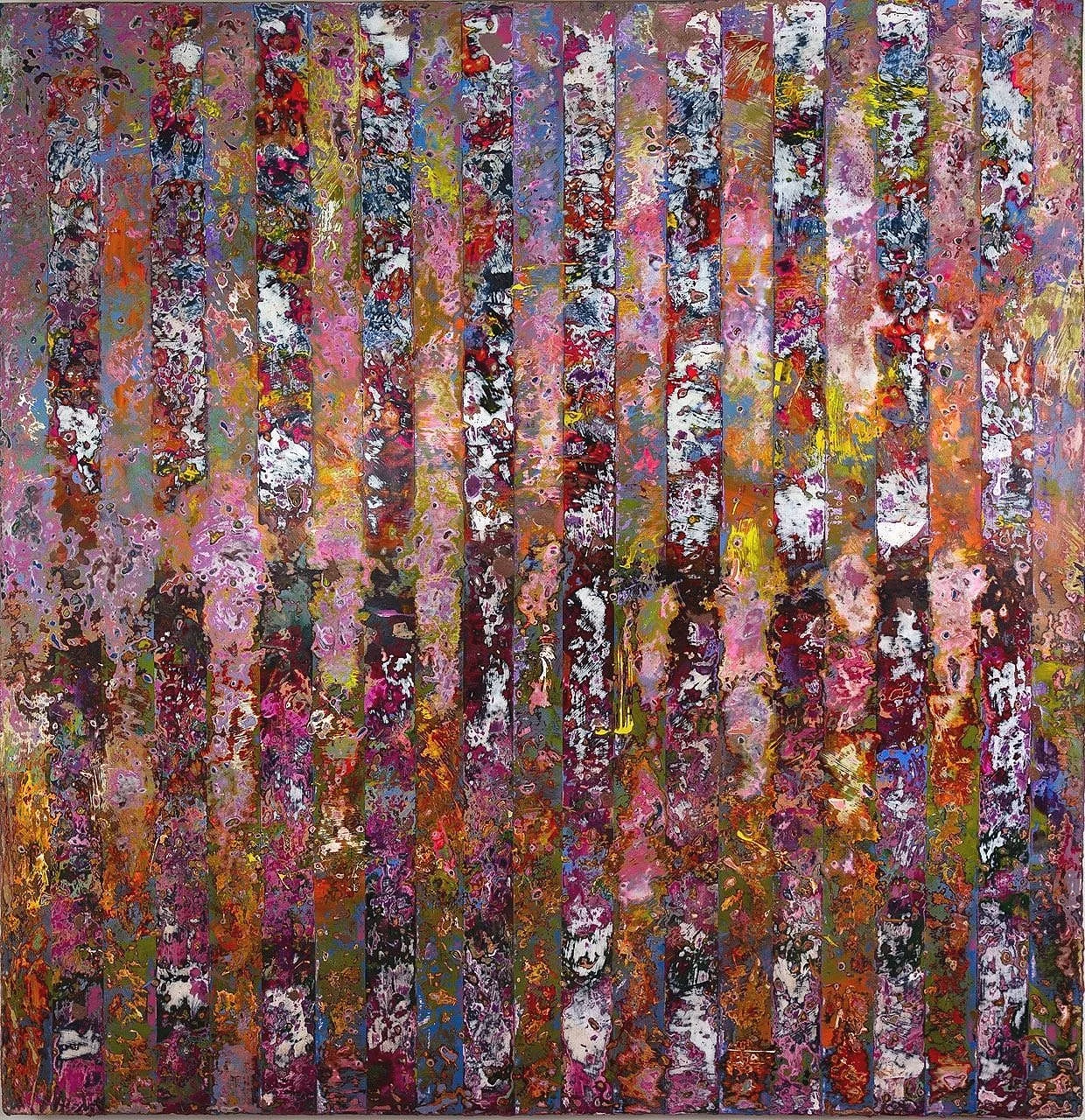In conversation with Nashville songwriter, Mary Gauthier, she described two types of songwriters to me: those who crank out two or three songs a day on their kitchen table and those who chisel their words for days or weeks or even months. Mary’s songs are the chiseled type. She says she learned it from touring with Guy Clark. She agonizes over every word. Every note.
The Prophets are the same: chiseled, hammered, sanded, painted, stripped, striped, beaten, sanded some more, and re-painted for weeks, even months, and almost thrown out the window, until one day it all comes together in a symphonic mess of scrapes, scratches, and colors. These are slow paintings. Slow to make and slow to look at, each filled with enough layers of paint and crud to cover a wooden window sill on an old house.
The Prophets / Number 1 (2023)
acrylic, ink, graphite
64 x 66 inches
© iv whitman 2023
Painting each one of The Prophets is an exercise in frustration. They aren’t easy and they sure aren’t fun to paint. They are more about excavation than painting, even sculptural on some level. And like a lot of art, these are metaphors and symbols for something beyond their material. Colors and surfaces instead of prophecies.
I don’t imagine prophets enjoyed their job listening to God and delivering the worst kind of news. Repent or burn in hell doesn’t make for an ice breaker in a king’s court. And when God makes good on the promise, the prophet ends up being sawn in half or grilled over a fire or passing onto the next life in some other unsavory way. One might say that job satisfaction for the prophet was low to none.
To live and to die for one’s belief is a lost art. Life has become far too comfortable and prophet work is often outsourced to those with little money, but lots of passion. In fact, believing in anything where I’m from is a dangerous sport. Except for money. We might almost be willing to die for that. Or die trying to make it. Instead, the prophet lives as though our lives, not his or hers, depends on it. And it is always about the future: the future of the planet, the future of a nation, looming wars and diseases, the future of life after life.
All in all, The Prophets is the feeling I have when considering the prophets themselves, not their messages. No prophecy is easy to deliver, just as no real work of art is easy to make. Yet, we do it anyway. Reputation be scorched and ego be damned.

